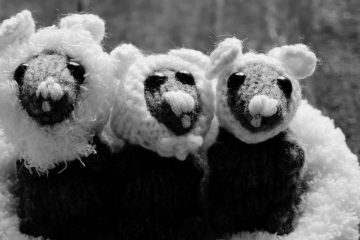What Happened On March 29th?
March 29th, 1974, forever changed the landscape of archaeology. On that day, a group of farmers in Lintong County, near the city of Xi’an, China, stumbled upon an unbelievable discovery – the Terracotta Army. Buried beneath the earth for over 2,000 years, this vast collection of life-sized terracotta warriors, horses, and chariots emerged from their slumber, offering a breathtaking glimpse into the power and ambition of China’s first emperor, Qin Shi Huang.
How Was The Army Born?
The Terracotta Army was not a random creation… it was all very meticulously planned for a specific purpose. Almost one thousand years before the rule of Charlemagne, Qin Shi Huang, a ruthless yet visionary ruler, obsessed with immortality, started a colossal project to build a vast mausoleum complex to accompany him in the afterlife.
This complex, also replicating his palaces, stables, and other structures, was designed to replicate his court and military on a grand scale. The Terracotta Army, forming a part of this complex, represented his mighty army of 8,000 soldiers, forever guarding him in the afterlife.
Every Soldier Was Different
While the imposing warrior figures are the most recognized aspect of the Terracotta Army, it’s far more diverse than meets the eye. Yes, there are thousands of meticulously crafted warriors, each with individual facial features, hairstyles, and armor, reflecting the different ranks and units within the Qin army.
But alongside them stand cavalrymen, archers, charioteers, officials, and even acrobats and musicians! This diverse assembly paints a vivid picture of the vast human tapestry that made up the Qin Empire.
How Could They Survive For 2,000 Years?
One of the most remarkable aspects of the Terracotta Army is its remarkable state of preservation. Buried deep underground, these terracotta figures remained largely untouched for over two millennia. Now, several factors contributed to their survival.
- The use of high-quality, well-fired clay ensured their structural integrity.
- The meticulous process of sculpting and painting the figures added a protective layer.
- And most importantly, the location itself, sealed beneath a layer of packed earth, shielded the army from the ravages of weather and human intervention.
What Types Of Weapons Did They Hold?
The Terracotta Army offers a fascinating window into the military prowess of the Qin dynasty. The warriors’ armor and weapons – intricately detailed swords, spears, and crossbow triggers – provide valuable insights into the weaponry and fighting techniques of the Qin army. The meticulous formation of the soldiers, categorized by rank and unit, hints at the strict discipline and organization that made the Qin a formidable military power.
They Even Painted The Soldiers With Colors
The Terracotta Army is not just a historical artifact; it’s a testament to the artistic mastery of the Qin era. The sheer scale of the project – thousands of life-sized figures with unique details – is awe-inspiring. The craftsmanship displayed in the sculpting, the realistic expressions on the soldiers’ faces, and the vibrant colors (though faded over time) all point to the extraordinary artistic skills of the Qin artisans. Could you imagine 8,000 soldiers full of paint?
How The World Reacted To This
The discovery of the Terracotta Army in 1974 was just the beginning. Archaeological excavations still continue to this day with the discovery of new sections of the mausoleum complex, offering further insights into the life and legacy of Qin Shi Huang. However, the mystery surrounding the emperor’s actual tomb remains unsolved, adding another layer of intrigue to the archaeological marvel.
Evermore, the discovery of the Terracotta Army allowed for a global fascination with Chinese history and culture. It has become a symbol of China’s rich heritage and a testament to the ingenuity and artistry of its people. Millions of tourists flock to Xi’an each year to witness these remarkable figures, and their image continues to be used in movies, video games, and other popular media.
The Terracotta Army represents a window into a bygone era, offering a glimpse into the ambition and artistic achievements of the Qin dynasty. The meticulous detail, the sheer scale of the project, and the state of preservation after centuries buried underground all contribute to the dedication of the people who created them. The story of the Terracotta Army continues to inspire us of the enduring power of the past.
What Did You Learn?
So, what do you think about this?
How old were you when you first learned about the Terracotta Army?
To me, it is simply unbelievable how they managed to do preserve such a masterpiece for over 200 years.
Thank you!





